Fixing A Broken Tooth
When crunching ice or hard candy, you notice something hard in your mouth that doesn't melt or dissolve. You get a sick feeling when you realise what it is: a broken tooth fragment. Although the enamel that covers your teeth is the most solid and mineralized tissue in your body, its strength is limited. Falling, receiving a blow to the face, or biting down on something hard can cause a tooth to chip or break, especially if the tooth already has some decay. Don't be alarmed if you discover a broken or chipped tooth. Maybe it's time to visit a dentist at West Coast, where some of the most experienced dentists are at. There are numerous things your dentist can do to help you.
How to Take Care of a Broken or Chipped Tooth
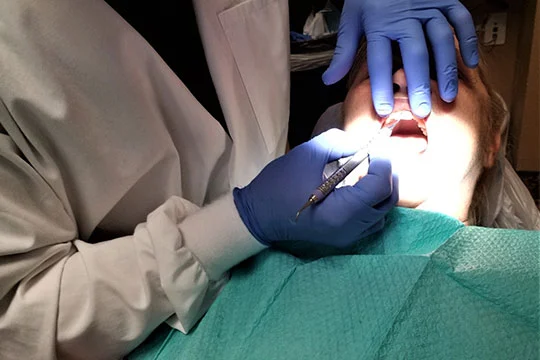
If you have a broken, chipped, or fractured tooth, you should see your dentist as soon as possible. Otherwise, your tooth could be further damaged or infected, potentially resulting in tooth loss.
In the meantime, consider the following self-care strategies:
- If the break has resulted in a sharp or jagged edge, cover it with wax paraffin or sugarless chewing gum to prevent it from cutting your tongue or the inside of your lip or cheek.
- Eat soft foods and avoid biting down on the broken tooth if you must eat.
- Take acetaminophen or another over-the-counter pain reliever if the tooth is painful. Use saltwater to rinse your mouth.
The severity of the damage to a broken or chipped tooth will determine how it gets treated. If only a little piece of enamel has broken off, the repair gets completed in a single office visit. A badly damaged or broken tooth may necessitate a more time-consuming and costly procedure. Here are some methods your dentist may use to repair a broken or chipped tooth.
Veneers for the teeth
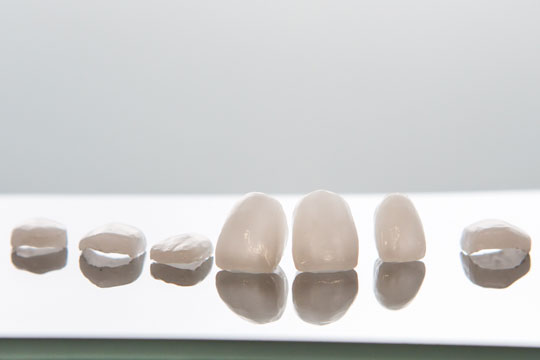
If a front tooth is broken or chipped, a dental veneer can restore its appearance and health. A dental veneer is a thin shell of tooth-coloured porcelain or resin composite material that wraps the entire front side of the tooth and includes a thicker section to replace the broken part of the tooth.
Your dentist will remove about 0.3 to 1.2 millimetres of enamel from the surface of your tooth to prepare it. The dentist will then take an impression of the tooth, which will get sent to a dental laboratory. The laboratory will then fabricate the veneer. When it is ready, which usually takes a week or two, you'll need to return to the dentist to have it installed. To prepare the tooth for the veneer, your dentist will etch it with a liquid to roughen the surface. It is then adhered to the prepared tooth with a special cement by the dentist. After placing the veneer, your dentist will use a special light to activate chemicals in the cement, causing it to harden quickly.
Treatment for Knocked-Out or Broken Teeth
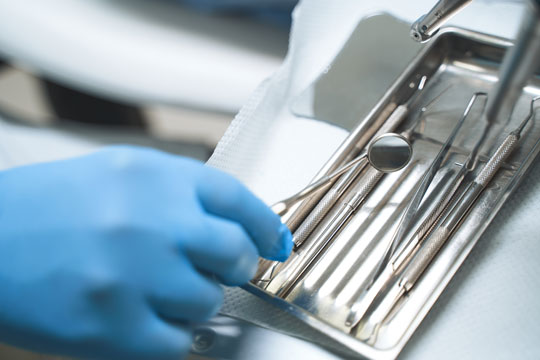
If the person has a severe injury or is unconscious, do dial 995.
A permanent tooth that got knocked out is a dental emergency. In many cases, knocked-out teeth can get reimplanted. The best chance of success is with a permanent tooth that gets reimplanted within 30 minutes.
1. Gather teeth or tooth fragments
- Only the crown, or the top part of the tooth, should be touched. Do not touch the tooth's root.
- If there is dirt or foreign matter on the tooth, gently rinse it in a bowl of lukewarm water for no more than 10 seconds. To remove dirt, do not scrub, scrape, or use alcohol.
- Handle teeth with care, as damage may prevent reimplantation.
2. Replace or store teeth
- Use warm water to rinse your mouth.
- Re-insert permanent teeth into their proper sockets if possible. Have the person bite on a gauze pad to keep the teeth in place.
- If you can't re-insert permanent teeth, baby teeth, or tooth fragments, store them in whole milk or between your cheek and gum to keep them from drying out.
3. Address Symptoms
- Apply a cool compress to relieve pain and swelling. Persuade a child to eat an ice pop.
- Take acetaminophen or ibuprofen for pain relief.
- Use sterile gauze or cloth to stop the bleeding.
4. Seek Assistance
- Call a dentist if your teeth are chipped or broken.
- If you have a knocked-out tooth, you should see a dentist or go to the emergency room right away. Take the teeth or fragments of teeth with you. You should see a dentist even if your teeth got re-inserted.
Dental Bonding or Filling
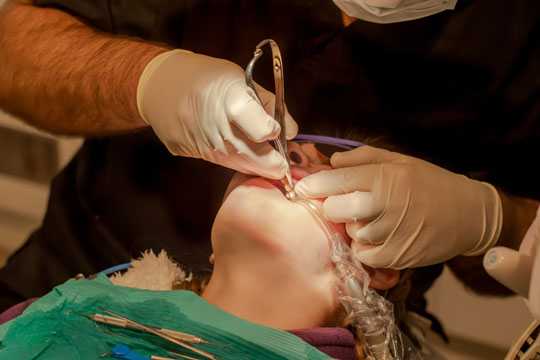
If you have only chipped a small piece of tooth enamel, your dentist may be able to repair the damage with a filling. If the repair is to a front tooth, or you can see it when you smile, your dentist will most likely use bonding, which involves a tooth-coloured composite resin.
Bonding is a simple procedure that does not usually necessitate numbing the tooth. To bond a tooth, the dentist first roughens the surface with a liquid or gel to make the bonding material adhere to it. The dentist will then apply an adhesive material to the tooth, followed by a tooth-coloured resin. The dentist uses ultraviolet light to harden the bonding material after shaping it to look like a natural tooth.
Root Canal Treatment
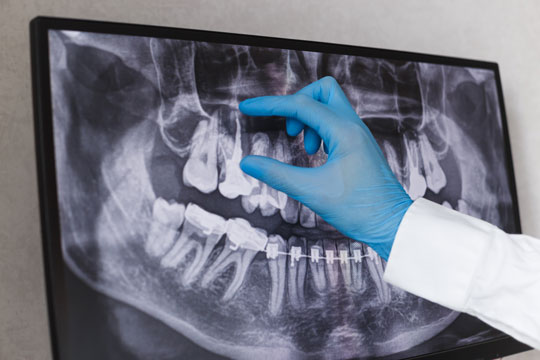
Bacteria from the mouth can enter and infect the pulp if a tooth chip or break is large enough to expose the pulp. If your tooth hurts, changes color, or is sensitive to heat, it is likely that the pulp is damaged or diseased. Pulp tissue can die, and if it does not get removed, the tooth may become infected and require extraction. Root canal therapy consists of removing the dead pulp, cleaning the root canal, and sealing it.
General dentists and endodontists can both perform root canal therapy. Most root canal treatments are no more painful than filling a cavity. The remaining tooth must usually get covered with a crown to protect the now-weakened tooth.
Crown or dental cap
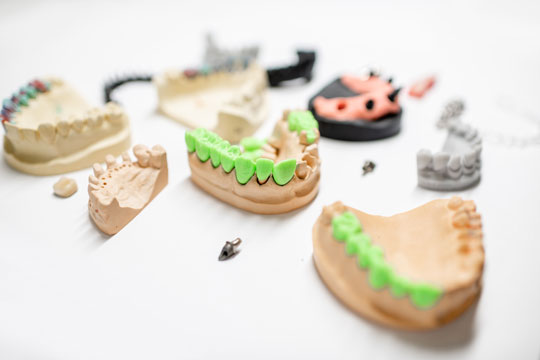
If a large piece of tooth breaks off or has a lot of decay, the dentist may grind or file away a portion of the remaining tooth. He then covers it with a crown, or tooth-shaped cap, designed to protect and improve the tooth's appearance. Metal, porcelain fused to metal, all resin, or all permanent ceramic crowns are available. Different types provide different advantages. All-metal crowns are the most durable. Crowns made of porcelain or resin can look nearly identical to the original tooth.
If the entire top of the tooth got broken off, but the root is still intact, the dentist or an endodontist may perform root canal therapy and place a pin or a post in the canal before building up enough of a structure to support a crown. Later, it can get cemented over the pin or post-retained restoration by the dentist.
Typically, a crown gets placed in two visits to the dentist's office. During the initial visit, your dentist may take X-rays to examine the tooth roots and surrounding bone. If no other issues get discovered, the dentist will numb the tooth and surrounding gum before removing enough of the remaining tooth to make room for a crown. If a break or chip has caused a large portion of the teeth to go missing, your dentist can use a filling material to rebuild the tooth to support the crown. Following that, your dentist will indent the tooth receiving the crown and the opposing tooth with a putty-like material.
Your dentist will remove the temporary crown and check the fit of the permanent one before permanently cementing it in place during the second visit, which is usually 2 to 3 weeks later.
Some dental offices have specific digital milling technology that allows them to make a crown on the same day without a putty impression. They may also have intra-oral scanners, which generate a digital print. The print gets sent to a lab in an electronic file.
Why is Dental Crowns the recommended method for you?
A dental crown is a common and effective dental restoration used to fix a broken tooth. It is designed to cover and protect a damaged or weakened tooth while restoring its function and appearance. Here's how a dental crown can help fix your broken tooth:
- Protection: A broken tooth can be vulnerable to further damage, infection, or decay. A dental crown provides a protective covering that encapsulates the entire visible portion of the tooth above the gumline, preventing further damage and deterioration.
- Structural support: When a tooth is broken or severely decayed, it may lose a significant portion of its original structure. A crown is designed to restore and reinforce the tooth's strength and integrity. This allows you to chew and bite with the repaired tooth as you would with a natural, healthy tooth.
- Aesthetic improvement: Dental crowns are typically fabricated to match the colour, shape, and size of your natural teeth. This means that once the crown is placed, it will blend seamlessly with your smile, providing an aesthetically pleasing result. This is particularly important for teeth that are visible when you smile.
- Long-term durability: Dental crowns are typically made from durable materials such as porcelain, ceramic, or metal alloys. These materials are capable of withstanding the forces of chewing and biting, and they are resistant to staining and wear. As a result, dental crowns are known for their longevity and can last for many years with proper care.
If you experience any broken tooth or tooth fragments, contact your dentist today. There are many dental clinics in Singapore, no matter where you are residing. If you are staying in the west, fret not. There are many dentist around Clementi. Many professional dentists in Singapore are sure to fix your tooth to perfection again.
